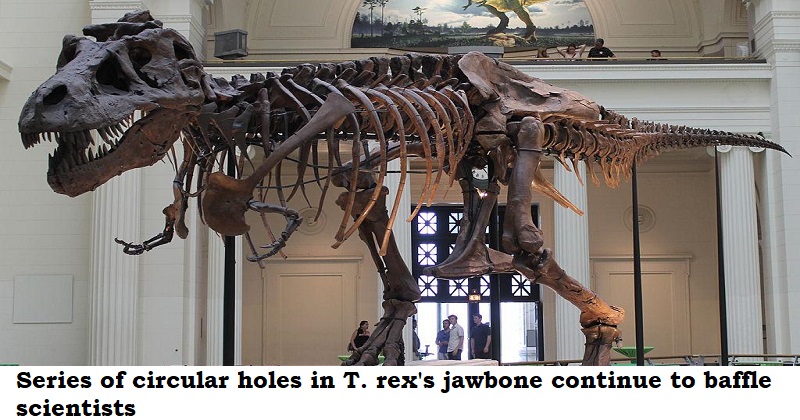
Sue was undoubtedly a terrifying creature when it prowled what is now South Dakota around 67 million years ago at the end of the dinosaur era. Sue is the largest and best preserved Tyrannosaurus rex yet discovered.
However, not even this enormous dinosaur, whose remains are on exhibit at the Field Museum in Chicago, was impervious to danger.
The numerous circular holes in Sue’s jawbone, which continue to confound scientists, are a prime illustration of this.
Though one major theory has been ruled out by recent studies looking for an explanation for these gaps, the solution is still elusive.
Eight holes on the left lower jawbone, or mandible, on the rear half, some the size of golf balls, according to researchers, were not brought on by a particular microbial illness as some specialists had suggested.
According to Bruce Rothschild, a physician and research associate at the Carnegie Museum of Natural History in Pittsburgh and the study’s lead author, the holes were discovered to be distinct from the bone damage brought on by such an infection.
The findings were published this week in the journal Cretaceous Research.

Post Your Comments